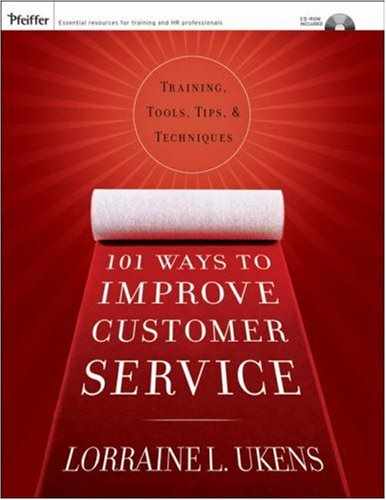Goal

To examine how personal attitude affects situational outcomes for customer service quality. Participants will read a case study regarding customer service attitudes and discuss their personal experiences.
Introduce the session by stating that an attitude can be defined as a relatively strong belief or feeling toward a person, object, idea, or event. Both individual and organizational attitudes can have significant impact on customer service interactions. This activity will provide an opportunity to examine how attitudes influence service outcomes.
Form subgroups of three or four persons each.
Distribute one copy of the worksheet to each participant.
Referring to the worksheet, read aloud the scenario. Tell the subgroups to spend approximately 30 minutes using the questions provided to discuss their own experiences.
Allow approximately 30 minutes, giving a 5-minute warning before time expires.
Ask each subgroup to provide examples, using the discussion questions from the worksheet.
Facilitate a large group discussion by asking the following questions:
Stew Leonard, the owner of Stew Leonard’s, the “world’s largest dairy store” (located in Norwalk, Connecticut), credits his ultimate success to a change in attitude that he made shortly after the store opened.
He was standing at the store’s entrance when a customer came up and said in an angry voice, “This eggnog is sour.” Stew took the half-gallon container, opened it, and took a taste. He then looked the customer in the eye and said, “You’re wrong; it’s perfect.” And to prove that he was right, he added, “We sold over three hundred half-gallons of eggnog this week, and you’re the only one who complained.” The angry customer demanded her money back and said, “I’m never coming back to this store again!”
That evening, Stew reflected on the incident and came to the conclusion that he had made two huge mistakes. First, he had not listened to the customer, and second, he had humiliated her by saying that three hundred other customers had not complained. He decided that the success of his small store would depend on good customer service that would generate repeat business. He decided to adopt two basic store policies, which have been chiseled into a three-ton rock next to the front door of the store. The simple message reads:
Rule 1: THE CUSTOMER IS ALWAYS RIGHT!
Rule 2: IF THE CUSTOMER IS EVER WRONG, REREAD RULE 1.
Source: Leonard, S. (1988, June 27). Love your customer. Newsweek.

